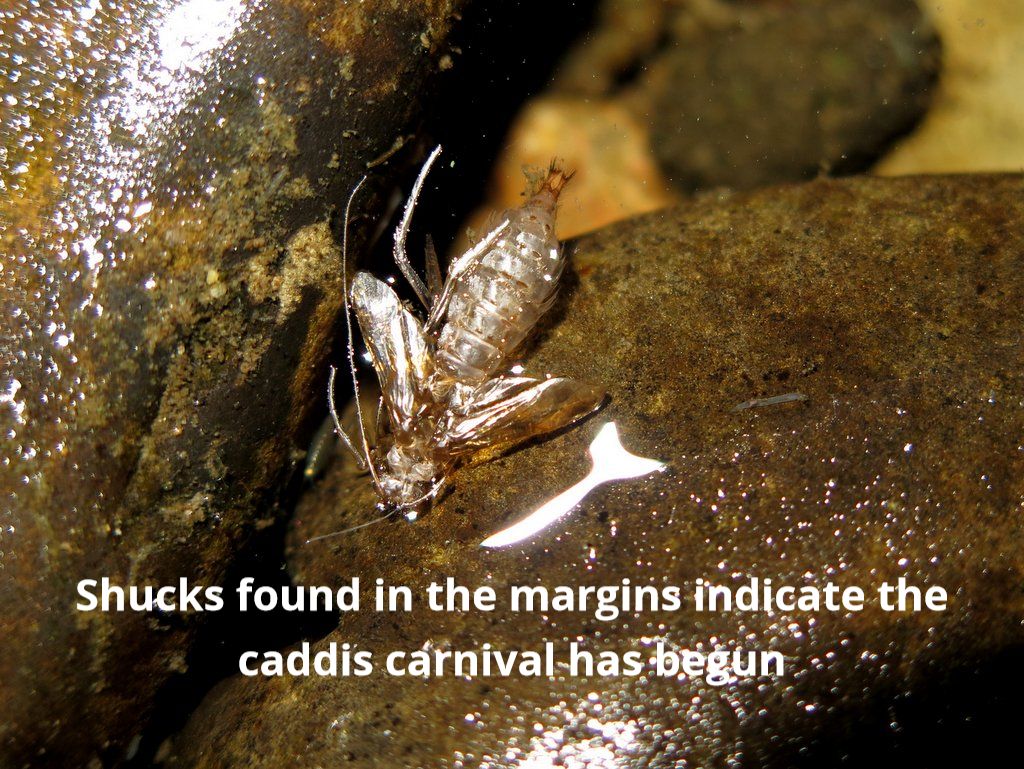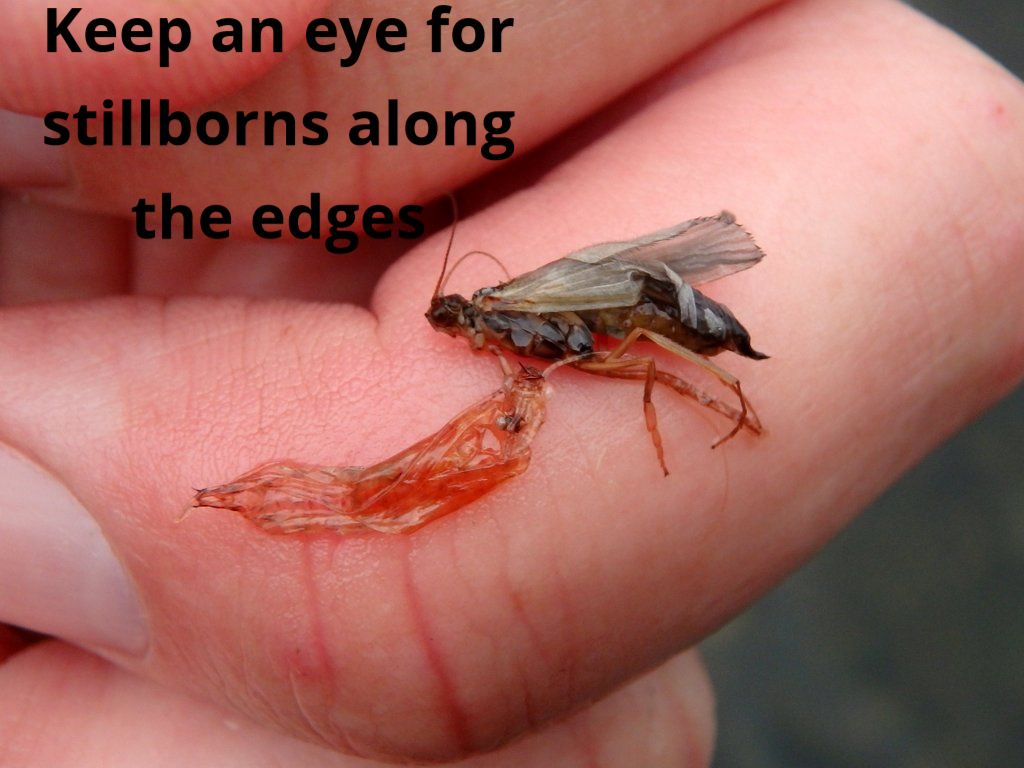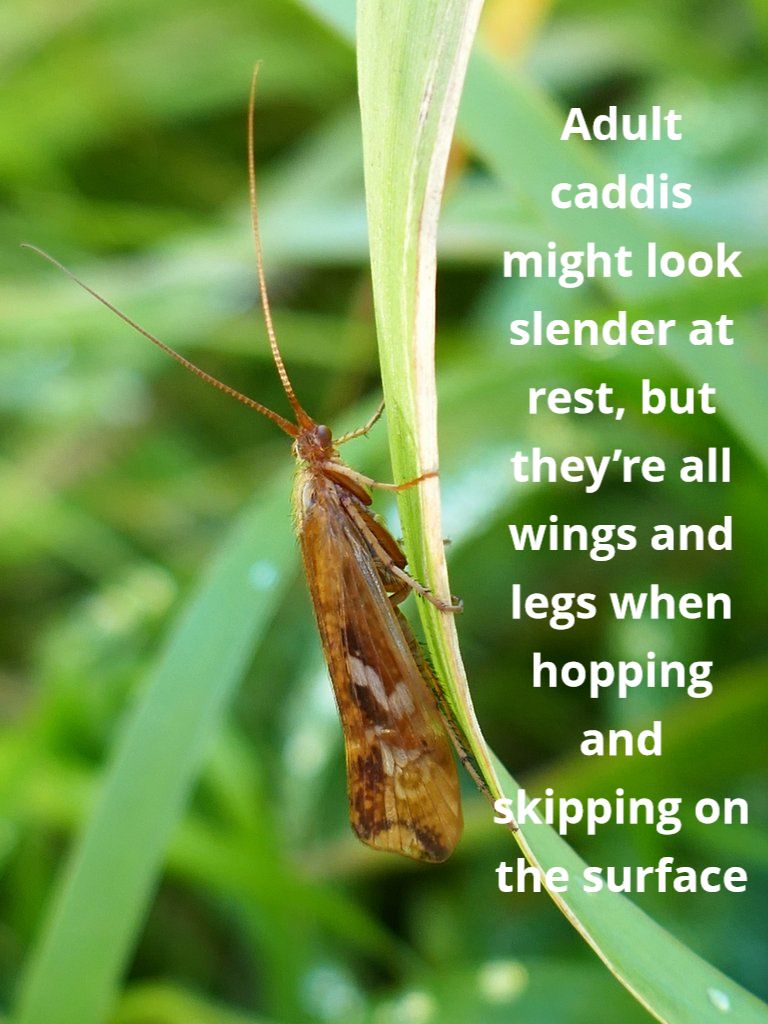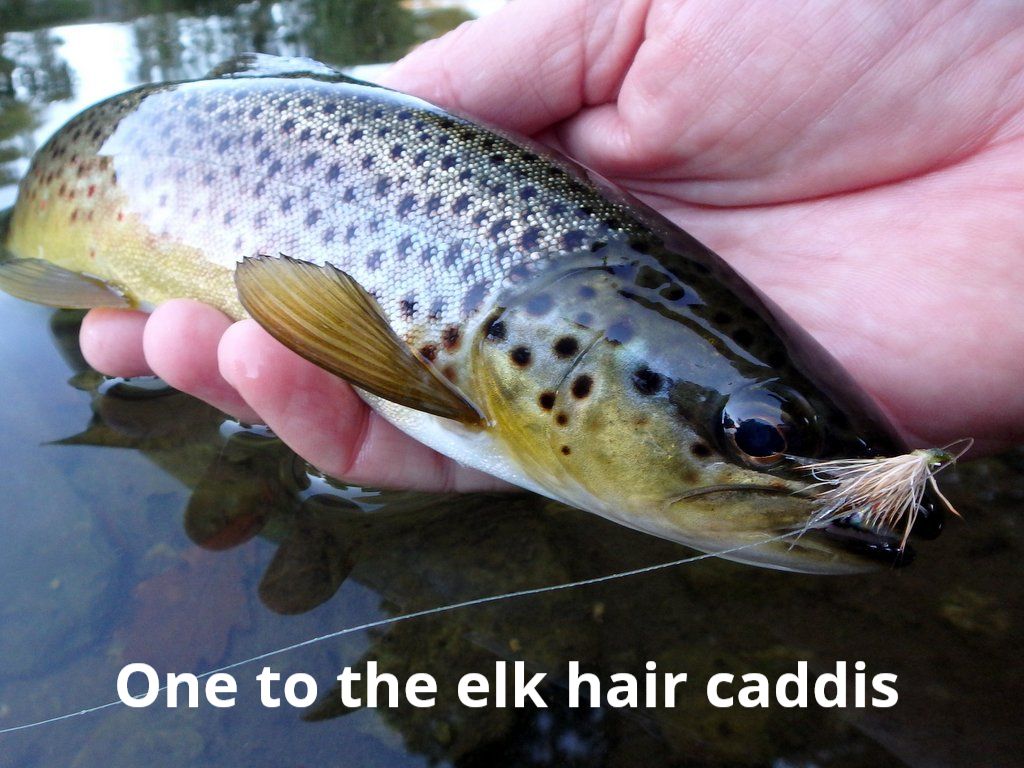June River Fishing
What’s Happening?
What to look for
With the best of the spring upwinged hatches but a memory now, we can look to June with caddis (sedges) in our sights. There are many caddis species throughout the UK, though it’s not a requirement that we are able to identify them all. The main two groups are Hydropsyche and Rhyacophila, which both hatch in open water and generally towards evening time. That said, if we experience cool, wet days then they can emerge from the afternoon to early evening.

Unlike upwing hatches that tend to build up slowly, caddis hatches are more a full on affair when all of a sudden the air is swarming with adults. Of course, we can check gateways spider’s webs and for adults from previous hatches, as well as the margins, or backwaters, where discarded shucks, or unfortunate stillborns from previous hatches litter the surface. The main thing is, to switch flies quickly, once fly start emerging. As we experience the longest day in June, and coupled with soaring temperatures, often caddis refrain from hatching until the last hour of daylight and into the wee small hours, so don’t forget a head torch! 
What to use
As the caddis species mentioned above hatch at the surface, all we need is a floating line with a Cortland WF 444 peach line as good as any, which due to its progressive taper, provides stable turn over. We also need to consider beefing up the tippet as in the growing gloom trout often gain confidence. Bear in mind too that fish move that more quickly to intercept fast moving caddis, which often results in smash takes. You won’t go far wrong with Wychwood 5lb ghost mode.
During the early stage of the hatch, it’s worth suspending a caddis pupa some 2ft behind a buoyant dry fly, like an elk hair caddis for example. This is best presented upstream and fished back dead drift though the occasional tweak doesn’t hurt. This not only imparts a little movement to your dry fly, but gently raises the pupa pattern through the water, just like an ascending natural
As darkness descends, fishing two flies can result in tangles, so now is the time to snip off the trailing pupa and use a single dry fly. Remember too, the trout’s eye sight isn’t quite as good in poor light, so we can actually step up the size of our imitation, so it makes more of a commotion.
Naturally, spotting takes in near darkness is virtually impossible, so we advise you fishing your fly on a tensioned line, to feel for takes. This is achieved by standing square on to the flow and casting 90 degrees across the current. Then holding your rod at 45 degrees so a portion of the line is clear of grabbing currents, allow the floating caddis to gently swing round on the current. Takes usually manifest themselves as quite a violent tug…you have been warned!





















